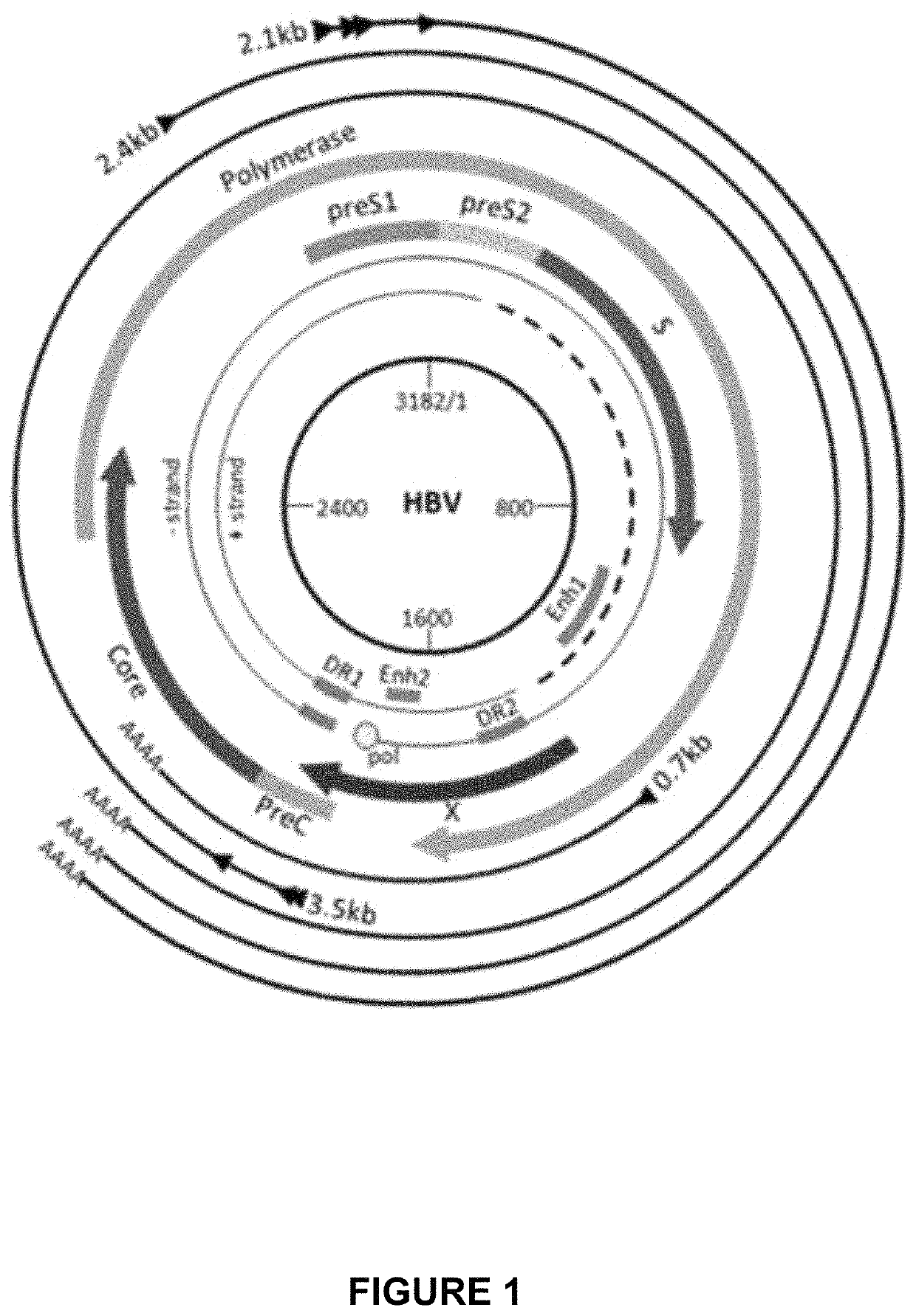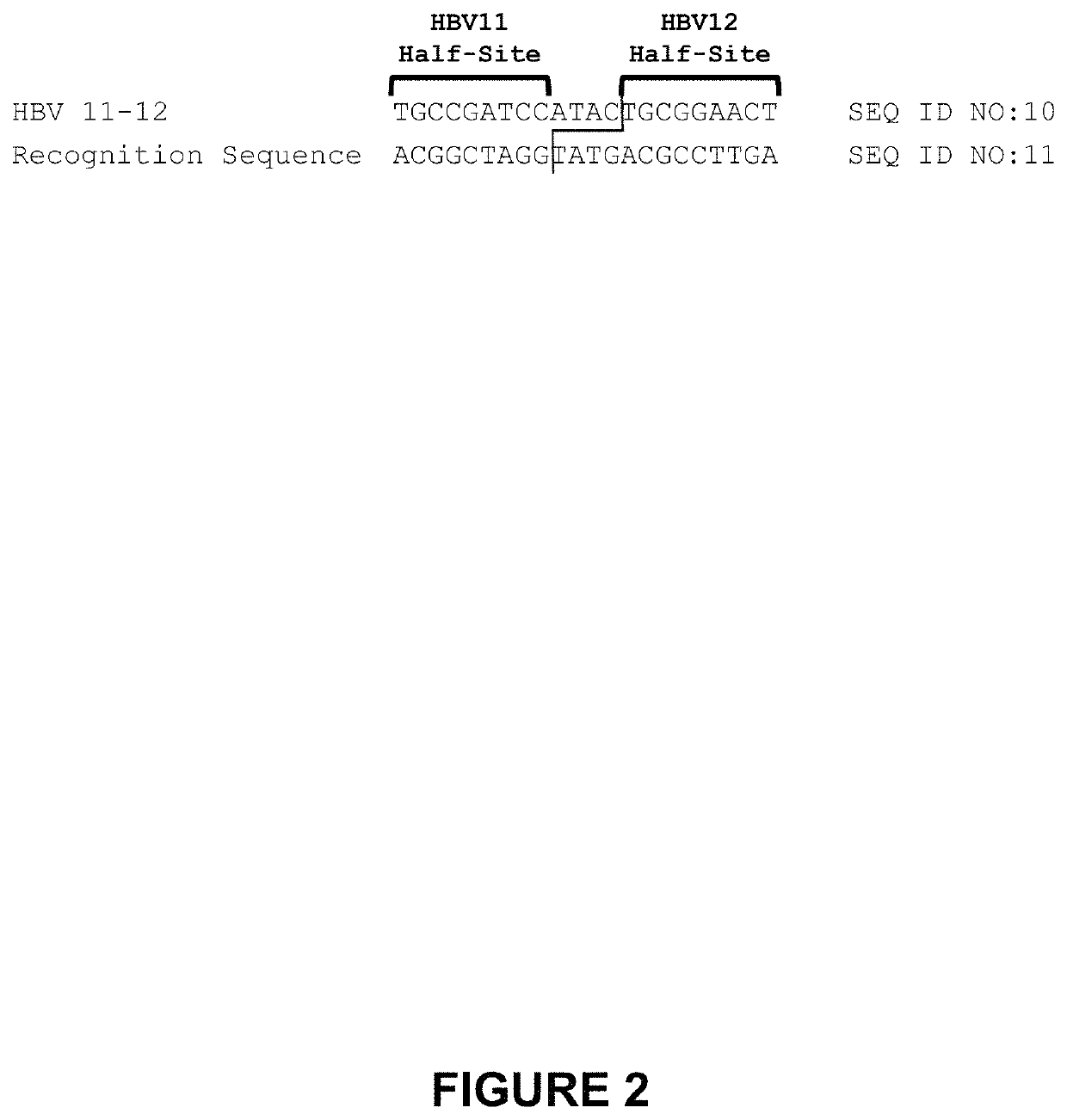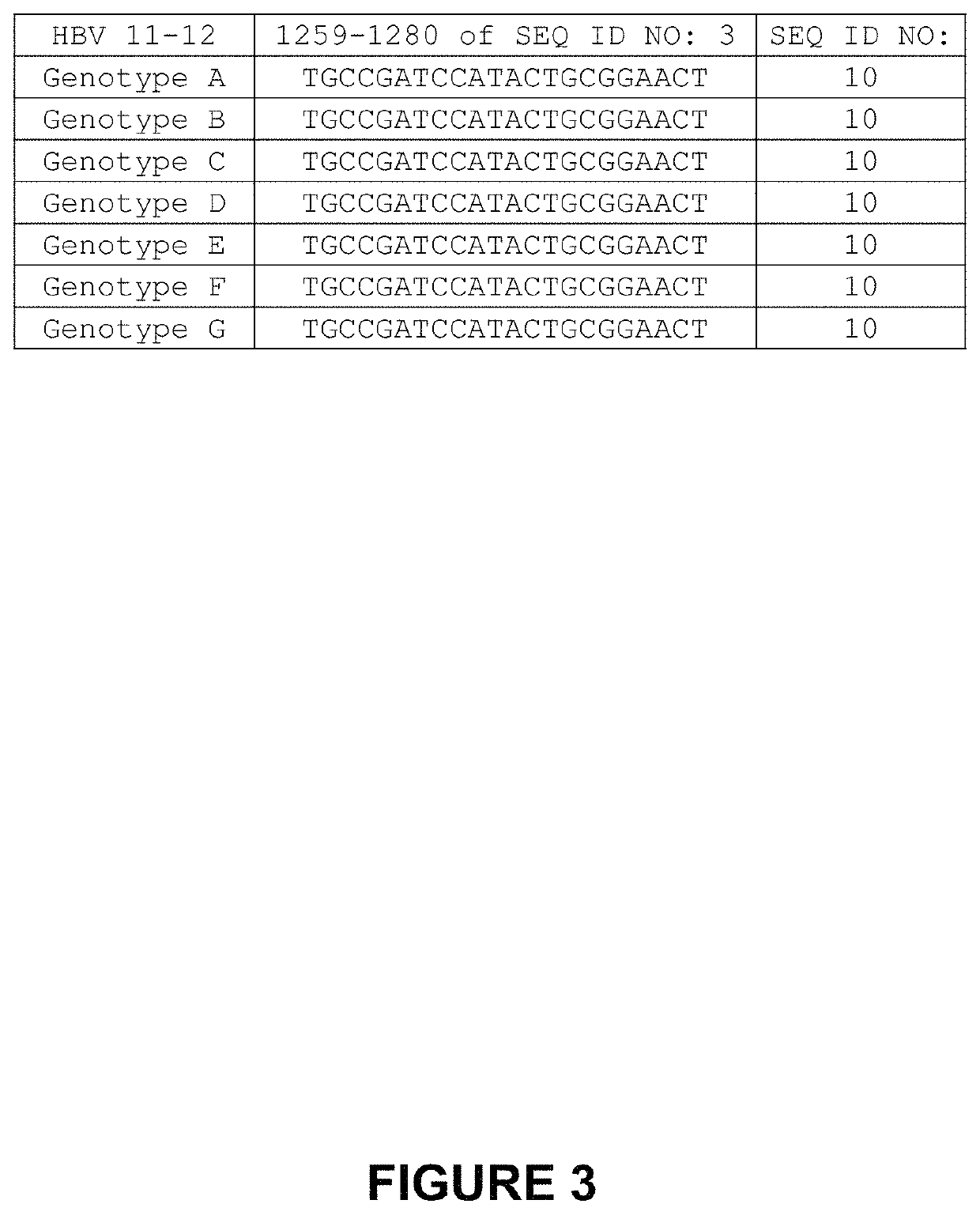Optimized engineered meganucleases having specificity for a recognition sequence in the Hepatitis B virus genome
a meganuclease and genome technology, applied in hydrolases, enzymes, biochemical equipment and processes, etc., can solve problems such as interference with gene expression, and achieve the effects of reducing symptoms, and reducing the level or proliferation of hbv
- Summary
- Abstract
- Description
- Claims
- Application Information
AI Technical Summary
Benefits of technology
Problems solved by technology
Method used
Image
Examples
example 1
Characterization of Meganucleases Having Specificity for the HBV 11-12 Recognition Sequence
1. Meganucleases that Recognize and Cleave the HBV 11-12 Recognition Sequence
[0348]The second-generation HBV 11-12 meganucleases, referred to as HBV 11-12L.363 (SEQ ID NO: 12) and HBV 11-12L.367 (SEQ ID NO: 13), were engineered to recognize and cleave the HBV 11-12 recognition sequence (SEQ ID NO: 10), which is present in multiple Hepatitis B virus genotypes, including genotypes A-G (SEQ ID NOs: 3-9, respectively). Each of these second-generation meganucleases comprises an N-terminal nuclease-localization signal derived from SV40, a first meganuclease subunit, a linker sequence, and a second meganuclease subunit. A first subunit in each HBV 11-12 meganuclease binds to the HBV11 recognition half-site of SEQ ID NO: 10, while a second subunit binds to the HBV12 recognition half-site (see, FIG. 2). HBV11-binding subunits and HBV12-binding subunits each comprise a 56 base pair hypervariable region,...
example 2
Generation of Indels at Recognition Sequence In Vitro
[0365]Studies were conducted to evaluate the efficacy of HBV 11-12 meganucleases for causing insertions and / or deletions (“indels”) at their intended recognition sequence (i.e., the HBV 11-12 recognition sequence). Indel formation was detected in these experiments by either a T7 endonuclease I (T7E) digest or digital PCR analysis.
[0366]In these experiments, a HepG2 cell line (HepG2 HepB) was generated by Precision BioSciences to stably express one copy (as determined by digital PCR) of a ˜1500 bp region of the Hepatitis B genome including the HBV 11-12 meganuclease target site. HepG2 HepB (5×105) cells were transfected with mRNA (1 μg) encoding HBV 11-12L.26, HBV 11-12L.188, HBV 11-12L.363, HBV 11-12L.367, and HBV 11-12×.26, respectively, using the ThermoFisher Neon Transfection System according to the manufacturer's protocol. At two days post-transfection, genomic DNA was isolated from cells for analysis of indel formation by T7E...
example 3
Indel Frequency in HepG2 HepB Cells after Electroporation with HBV 11-12 mRNA
[0375]Further studies were conducted to evaluate the production of indels in HepG2 HepB cells following transfection with mRNA encoding the HBV 11-12×.26 or HBV 11-12L.363 meganucleases. HepG2 HepB cells described in Example 2 were electroporated with meganuclease-encoding mRNA according to the same protocols as above. In this experiment, two different mRNA batches encoding the HBV 11-12L.363 meganucleases were evaluated. Cells were electroporated with mRNA encoding either HBV 11-12×.26 (3605), a previously prepared batch of mRNA encoding HBV 11-12L.363 (3129), or a new batch of mRNA encoding HBV 11-12L.363 (3606). An mRNA encoding GFP was also electroporated into cells to serve as a transfection control. GFP-transfected cells were analyzed by flow cytometry, and transfection efficiency exceeded 90%. Cells were collected at 2 days and 6 days post-transfection, and subjected to gDNA isolation and ddPCR analy...
PUM
| Property | Measurement | Unit |
|---|---|---|
| diameter | aaaaa | aaaaa |
| diameter | aaaaa | aaaaa |
| length scale | aaaaa | aaaaa |
Abstract
Description
Claims
Application Information
 Login to view more
Login to view more - R&D Engineer
- R&D Manager
- IP Professional
- Industry Leading Data Capabilities
- Powerful AI technology
- Patent DNA Extraction
Browse by: Latest US Patents, China's latest patents, Technical Efficacy Thesaurus, Application Domain, Technology Topic.
© 2024 PatSnap. All rights reserved.Legal|Privacy policy|Modern Slavery Act Transparency Statement|Sitemap



